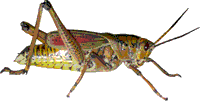Entomology Collections, General

Entomology Papers from Other Sources
Document Type
Article
Date of this Version
2006
Abstract
The use of olfactory cues for nest recognition by the solitary bee Osmia lignaria is studied in a greenhouse environment. Glass tubes are provided as nesting cavities to allow the in-nest behavior of bees to be observed. In addition, each glass tube is cut into three sections for experimental manipulation and for subsequent chemical analysis. Nesting females drag their abdomen along the tube before exiting, spiral inside the tube, and sometimes deposit fluid droplets from the tip of the abdomen. For the manipulation, the outer section, the middle section, or both sections are removed and replaced with similar clean glass tube sections, and the behavior exhibited by test females is recorded upon arrival in front of the nesting site and inside the nesting tubes. The resulting hesitation behavior displayed by females after treatments appears to indicate the loss of some olfactory cues used for nest recognition inside the entire nest. Chemical analysis of the depositions inside the nesting tube, as well as analysis of the cuticular lipids of the nesting bees, reveals the presence of free fatty acids, hydrocarbons and wax esters.


Comments
Published in Physiological Entomology (2006) 31, 110–119.